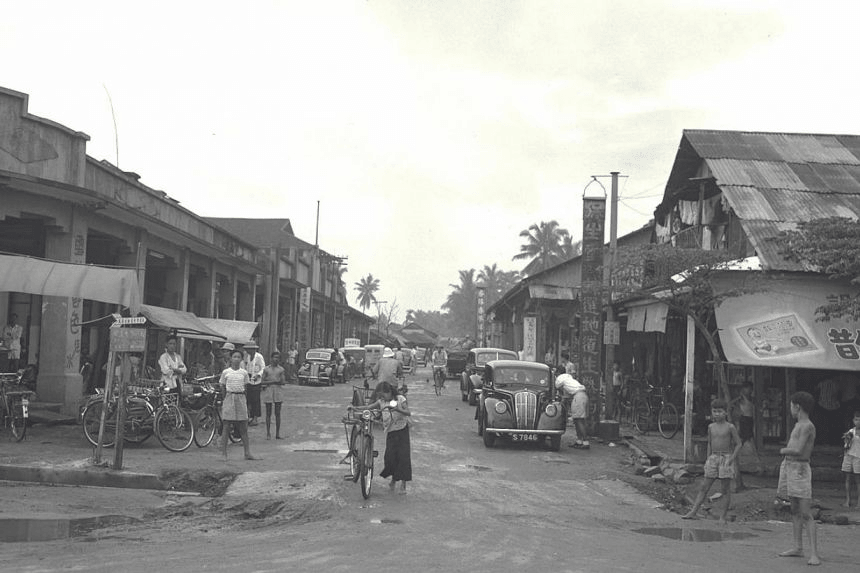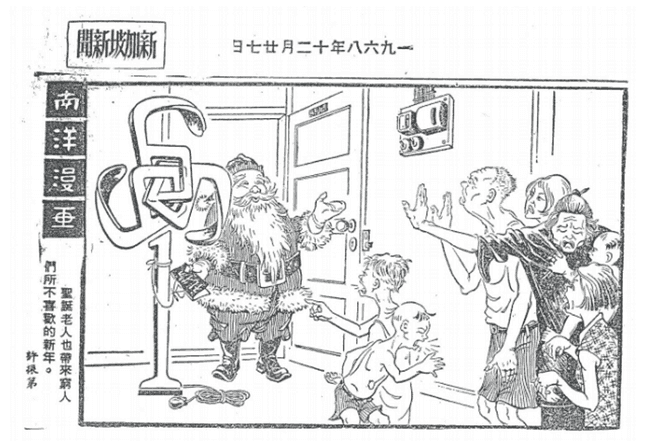
Rejecting a Fan in Singapore?
By Gregory Clancey

Source: Nanyang Siang Pau, 27 December 1968.
We tend to believe that people were always eager consumers of new technologies, especially those that aided their physical comfort. But they may have had other priorities. The caption on this political cartoon from the Singapore of 1968 reads "Sometimes Santa Claus gifts the poor with a new year they do not want." In today's more prosperous and highly air-conditioned Singapore, the situation in the cartoon may seem inexplicable.
The historical context of the drawing was the nation-wide forced resettlement of the population from urban slums, squatter (or informal) settlements, and rural villages (kampongs) into high-rise flats under the direction of the Housing and Development Board (HDB), which began in 1960. For many residents of these low-rise communities, resettlement came with the new experience of bill-paying, for rent and utilities. Many had done without electricity in their previous homes or had used meagre amounts of it at little expense.
Living in government-built high-rise flats meant not only rent (or later mortgages) but reliance on an ever-increasing number of electrical appliances which, combined with other costs, made life seem more precarious for some. The cartoonist includes an electrical meter on the wall to help explain the family's rejection of the fan. They are used to the heat and can live with it, the cartoonist seems to be suggesting. They can’t as easily live, however, with the new cost of utilities.
The "fan" stands for more than just a fan, however. You'll notice it's constructed of four numbers, which combine to form 1969 (the cartoon was published in December, 1968). The appliance is a metaphor for the whole of the current and future infrastructure that the government was then rolling out across the city-state, whose social and fiscal costs the cartoonist was critiquing.
The image thus "works" both as an illustration of the mundane situation of balancing priorities (which may not include thermal comfort) and metaphorically to express the gap between what policy-makers assume a family wants (and will pay for) and what they actually do.
Did the cartoonist get the public attitude right though? Within a decade, the government was asking Singaporeans to seriously cut back on electricity consumption given the 1970s' "oil shocks", which greatly increased the cost of energy. Electrical appliances had rapidly accumulated in HDB flats in the interim, including not only fans but such energy-consuming appliances as refrigerators, washing machines, and televisions.
